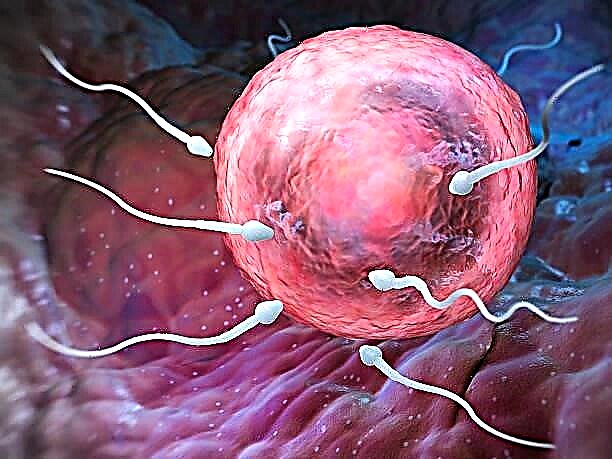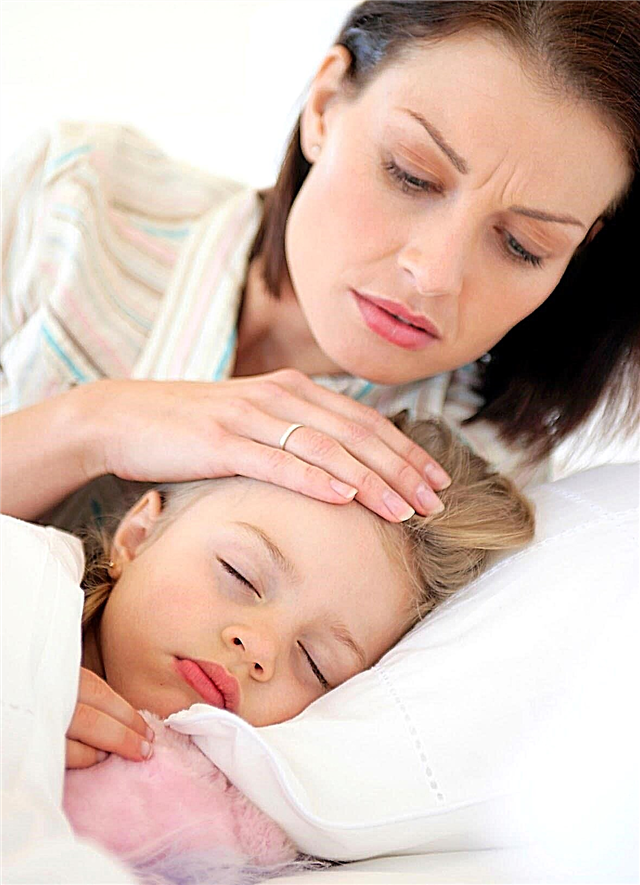
A child's throat can either get sore on its own or become a symptom of a specific disease. In this case, a high temperature often rises. Read this article to find out what to do if your child has a sore throat and fever.
Why does the temperature rise?
If a child has a sore throat, this in itself already indicates the fact of an inflammatory process in the body. The child is most likely to have a viral infection. The temperature in this case performs an important immune function - when it rises, the existence of the virus in the body becomes difficult.
Heat promotes the production of interferon proteins, without which the body will not be able to fight the foreign agent. It is interferons that perform the task of commanders that activate leukocytes and other "rapid response units" to fight.
In some cases, the child has a sore throat due to infection with bacteria or fungi. In such diseases, a high temperature is also a sign of the immune system, but already with pathogenic bacteria. It is not worthwhile to reduce fever, which is at subfebrile values (37.0-37.5), with medications, because together with its decrease, the process of interferon production slows down, which means that recovery is also delayed.
Antipyretic drugs should be given to the child after the temperature "crosses" the 38.0-38.5 mark. The younger the child, the more promptly one should respond to a high temperature, because there is a high risk of febrile seizures. The heat at 39.0-40.0 degrees should be reduced immediately.

Possible diseases
An increased temperature almost always accompanies a sore throat - an inflammation of the palatine tonsil, which is officially called in medicine (acute tonsillitis). With her, the throat has characteristic visual signs - a reddened amygdala, plaque is possible, the appearance of purulent or necrotic fragments.
The thermometer will rise above 38.0 and with pharyngitis. Almost all SARS are associated with an increase in temperature. A temperature above 37.0 (and usually not higher than 38.0) occurs with bacterial infections, streptococcal angina, staphylococcal angina.
Pain when swallowing, a white coating in the throat of a child appears with fungal infections, the temperature can be both normal and subfebrile - up to 37.5 degrees. A fever above 39.0 will rise only if the fungal infection becomes complicated and spreads to the internal organs through the bloodstream.
With allergic problems with the throat, the temperature rarely rises, as well as with pain caused by mechanical damage to the throat, burns or hypothermia.

Parents' actions
If a child complains of a sore throat, and the thermometer shows an elevated temperature, you should carefully examine the baby's throat, note its color, the presence of abscesses, vesicles, ulcers, plaque on the tonsils, larynx, pharynx and tongue. Then you need to carefully examine the skin of the toddler - whether he has pimples, rashes, spots. After that, you should call the doctor, since only a specialist can assess the totality of symptoms, conduct laboratory tests and establish the true cause of sore throat and fever.
An ambulance should be called immediately if the child is in serious condition - if the temperature is above 39.0 and lasts - despite taking antipyretic drugs. Emergencies include neck swelling, difficulty breathing, seizures, and severe vomiting. While the doctors are on the way, it will be necessary to provide the child with first aid.

First aid
First aid for sore throat (with accompanying heat) is to create an atmosphere of complete rest. The kid needs to be put to bed, turn on interesting cartoons or read him a book, keep him busy, so long as the baby does not try to talk - and even more so to shout. Additional stress on the vocal cords at the very beginning of the disease is contraindicated.
At temperatures above 38.5 degrees (and for children under 3 years of age, 38.0 degrees is considered "critical") an antipyretic agent should be given. Children are allowed to use "Paracetamol" and "Ibuprofen". Both drugs can have a slight pain relieving effect, which is important if the sore throat is severe. "Aspirin" is contraindicated for children.

The child must be given water, even if he refuses to drink. The refusal is quite understandable - it hurts to swallow. However, without fluid, the situation can be complicated by dehydration. At a temperature, the child loses a large amount of heat and fluid, he sweats, and these losses need to be urgently replenished. The drink should be warm. If the baby refuses to drink from the bottle, you should give the liquid with a spoon (often - almost constantly, while he is awake). If vomiting is added to the throat, fever, you should urgently call an ambulance.
It is better to drink tea, unsweetened compote (preferably from dried fruits), fruit drink. The drinking temperature should be equal to the body temperature so that the liquid is absorbed by the body as quickly as possible. Overly sweet drinks, carbonated drinks, sour drinks, juices and milk should be avoided.


Main treatment
The main therapy should be prescribed by a doctor who will find out the exact name and origin of the disease. For bacterial infections, the child may be prescribed antibiotics. At the same time, a fairly common treatment regimen involves a two-day pause.
During the first two days, the child is prescribed only local throat treatments - "Miramistin", "Vinilin". If necessary, prescribe a remedy for temperature. If on the third day the fever does not decrease, antibiotics of the penicillin group are prescribed ("Amosin", "Amoxicillin" and others). In cases with small children, extensive inflammatory processes, two days are not expected, antibiotics are prescribed immediately.
High heat can be reduced with "Paracetamol", irrigate the throat with "Miramistin" or rinse with a solution of furacilin. It is important to give your child as much water as possible.

For fungal infections, long-term (at least 14 days) therapy with antifungal agents is prescribed, which should be taken in combination - an antifungal spray in the throat, nose drops and tablets inside.
If the throat hurts due to prolonged exposure to allergens on the child's body, the doctor will definitely advise you to humidify the air, ventilate more often, remove carpets and soft toys from the children's room, as well as anything that can accumulate dust. Mom will have to do the cleaning without chlorine-containing products, and wash the linen only with baby powder. All foods that can cause allergies will need to be excluded from the child's diet.
Of the medicines, antihistamines "Suprastin" and "Loratadin", as well as local antiseptics in the throat ("Miramistin") can be recommended.


With a viral infection (which is more than 80% of all cases associated with fever and sore throat), antiviral drugs may be prescribed. However, today doctors believe that these drugs have no proven effectiveness, and therefore their use is not justified. It is believed that the best treatment is no treatment in the broadest sense of the word. The child needs to create good conditions for activating his own immunity, then in 3-5 days he will be able to completely defeat the infection.
These conditions include cool air in a room with a relative humidity of at least 50%. A room thermometer and a special device, a humidifier, will help to create such a microclimate. If it is not there, you can place basins of water around the apartment; wet towels can be hung on the batteries during the heating season.
It is recommended to instill a saline solution into the nose as often as possible, which can be easily prepared from a teaspoon of salt and a liter of boiled water. You can also gargle with the same solution. This is necessary so that the mucus in the throat and nasopharynx, which in a liquid state has an important antiviral effect, does not thicken and dry out.


Practical advice
- Treat a child with folk remedies it is possible only with the permission of the doctor, because some of the advice of "healers" can harm the baby. It is worth completely abandoning the use of honey rinses if the child is not 3 years old. Herbal decoctions for rinsing should not be given to children with allergies. Bad advice can also include the advice to soar your legs, pour mustard into your socks and rub your chest and neck with badger fat.
- If a child with a high temperature is wiped with cold water (with or without vinegar), as well as vodka or other alcohol-containing agent, then the heat transfer process is disrupted, which is fraught with vascular spasms, loss of consciousness, and the occurrence of seizures. This should not be done.
- Warming compresses on the throat do not apply at temperature, since heating increases the inflammatory process.

- Do not inhale, since in the heat they are categorically contraindicated, and after a decrease in temperature, they are practically useless. Inhalation can be done with the permission of a doctor, for diseases of the lower respiratory system - bronchi and lungs. In the treatment of red throat, neither steam nor ultrasonic inhalers are needed. This also applies to nebulizers.
- During treatment for a sore throat, the child may refuse to eat, to force him to eat by force in no case should be. If he himself asks for food, then the dishes should be chopped with a blender so that they are all soft, puree, not traumatizing a sore throat.

- During the entire course of treatment you should adhere to a diet that excludes sour, sweet, spicy, spices, pickled foods and canned food.
- The child can walk immediately after as the temperature drops to normal.



